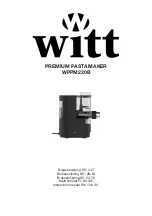
The JET Rapid printer
Page 11 of 61
2.5 Features and applications
The JET Rapid printer itself and in combination with option SPEED PLUS cover a wide range of high
speed applications.
2.5.1 Overview about features and applications
JET Rapid
Option SPEED PLUS
Features
•
Up to 30% faster than the JET3up
•
Multi-line printing with up to 5 lines
•
There are the same print modes
available as for the JET3up
•
There is a range of approved inks
available for various applications and
substrates
•
Up to 800 m/min maximum printing
speed in high quality
•
Single line printing for high speed
applications
•
There is a range of approved inks
available for various applications and
substrates
Applications
•
JET3up applications that require
higher production speeds especially if
there is a 2- or 3-line printout
required. E.g. filling systems or
bottling plants.
•
Single-line high speed printing with a
maximum print height of 2,5 mm.
•
E.g. serial numbers, expiry dates, lot
numbers
Restrictions
•
There is a smaller range of approved
inks available than for the JET3up
•
For optimal results the recommended
distance
between print head and
substrate 15 mm. Shorter distances
bear the risk of contaminating the
print head, larger distances may have
a negative effect on the quality of the
printouts.
•
Single-line printing
•
There is a smaller range of approved
inks available than for the JET3up
•
Restricted number of print modes:
•
Line Mode
•
3x7 tower
•
3x7 tower small
•
5x5
•
5x5 small
•
5x5 speed
•
5x5 speed small
•
7x5
•
7x5 speed
•
The recommended
distance
between
print head and substrate is 5 mm.
Shorter distances bear the risk of
contaminating the print head, larger
distances may have a negative effect
on the quality of the printouts.
2.5.2 Ink list JET Rapid
INK
JET Rapid
Option SPEED PLUS
55
μ
m
50
μ
m
70-030
70-031
70-101
70-106
70-126
70-134
72-102
76-101
All inks are approved for a ink temperature range between 20°C and 45°C. The temperature delta
during operation must not /- 7° C based on the ink temperature at the time of the last
calculation of the drop-break-off point whereby the ink temperature should never fall below 20°C and
never exceed 45°C.












































